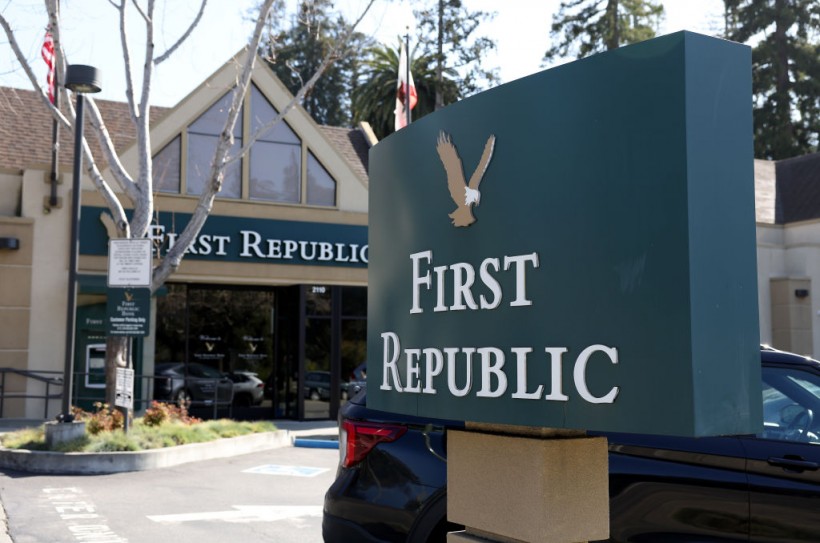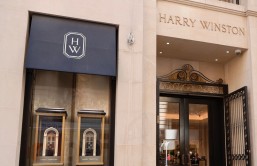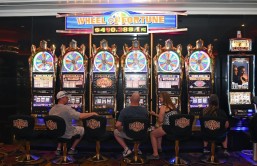
(Photo : Photo by Justin Sullivan/Getty Images)
Federal authorities said Thursday that First Republic Bank had struck a deal with some of the top US banks to stabilize its balance sheet following the failure of Silicon Valley Bank.
To support First Republic Bank's finances and mitigate the repercussions from the failure of two major lenders in the previous week, the top American banks have deposited $30 billion.
JPMorgan Chase, Bank of America, Citigroup, and Wells Fargo will each invest $5 billion in the California-based lender First Republic. Goldman Sachs and Morgan Stanley will each provide $2.5 billion, and BNY Mellon, PNC Bank, State Street, Truist, and US Bank will each contribute $1 billion.
First Republic Bank Intervention
However, uncertainty remains as to whether the decision would bolster investor confidence in First Republic and the banking industry as a whole. After recovering on Thursday, shares of First Republic fell more than 20% in after-hours trade.
The decline followed the bank's announcement that its dividend would be suspended "during this period of uncertainty." Also, the bank stated that it would seek to reduce its borrowing and the size and makeup of its activities as a whole, Financial Times reported.
According to hedge fund manager Bill Ackman's tweets, the coordinated attempt to boost the First Republic was a "fictitious vote of confidence," and "FRB default risk is now being shifted to our top banks."
In a hint of greater stress in the banking system, US lenders raced to the Fed for support in the aftermath of SVB's collapse. The Fed gave out $160bn across its discount window and new emergency facility on March 15.
The shares of First Republic, halted many times on Thursday due to volatility, closed the day up more than 10%. In the aftermath of the failures of Silicon Valley Bank and Signature Bank, the bank's issues emphasized ongoing concerns about the banking industry.
Wednesday, both Fitch Ratings and S&P Global Ratings cut the credit rating of First Republic Bank due to worries that depositors may withdraw their funds. Some regional banks, like First Republic, have significant sums of uninsured deposits over the FDIC's $250,000 maximum.
According to S&P Global, although First Republic's ratio of uninsured deposits is not as high as SVB's (94 percent), 68% of total deposits are uninsured. This resulted in many clients leaving the bank and placing their funds elsewhere, creating difficulty for the First Republic, which must either borrow money or sell assets to reimburse consumers for their cash deposits.
Banks lend a percentage of consumer deposits to other customers to generate revenue. First Republic's liability-to-deposit ratio is an exceptionally high 111%. This indicates that the bank has made more loans than client deposits, making it a hazardous investment.
Read Also: China Criticizes AUKUS Alliance, Warns 'Path of Error, Danger'
Treasury Secretary Seeks Lifeline
According to two persons familiar with the situation, Treasury Secretary Janet Yellen met privately with JPMorgan CEO Jamie Dimon on Thursday in Washington before 11 banks agreed to deposit $30 billion in First Republic Bank to support the faltering institution.
The meeting culminated in a series of meetings between Yellen and senior US authorities and leaders from some of the country's top banks over the previous two days as they sought a private sector lifeline for the struggling California bank.
Yellen spearheaded the campaign on the government side, while Dimon organized the bank CEOs who ultimately supported the large inflow of deposits. According to a different person who knew the situation, Yellen originally dreamed of the notion of the top US banks collaborating to funnel deposits to the First Republic.
Per CNN, the decision was viewed as crucial to stabilizing the bank's deposit base and an essential signal to the financial markets about the bank and the US financial system. After the failures of SVB and Signature Bank last week, investors determined that First Republic was also at risk, as its balance sheet included a significant amount of unrealized losses.
The fair value of its asset portfolio was $26.9 billion less than its book value, and the discrepancy was significantly beyond its equity of $17.8 billion. Like any other bank, the danger for the First Republic is that depositors may withdraw their funds quicker than the bank can liquidate its assets, primarily loan portfolios, long-term bonds, and mortgage-backed securities.
On Wednesday, Standard & Poor's downgraded the bank's bond rating to junk status. And on Thursday, shares of First Republic fell as much as 35 percent before recouping some losses on rumors that the San Francisco-based bank is considering strategic alternatives, including a sale. According to Daily Mail, its shares had increased by 14.7% at midday.
Related Article: Joe Biden Drops Bold Promise Amid US Banks Collapse
@YouTube









